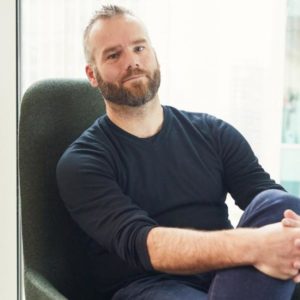BioInvestors Second Edition
Welcome to BioInvestors. This is PIR International’s panel with members from the global life science investor community aimed at sharing insights and reflections, provoking thought and asking questions about the life science and healthcare sector at large.
Welcome to phase 2 of PIR International’s BioInvestors initiative, ‘Preserving the biotech momentum in 2021 through Board leadership and diversity’. Given the continued growth of biotech across the globe, fuelled by positive sentiment for the sector out of the COVID response, what are the issues to consider to preserve that momentum?
We have asked some of the leading investors in the life science world for their thoughts on the issues that investors and Boards should be thinking about to ensure they continue to attract relevant C-suite leadership which will deliver the growth and success milestones.
For the second edition of BioInvestors, we are pleased to be joined by key expert investors:
- Edward Hodgkin, Partner, Syncona (https://www.synconaltd.com/)
- Deborah Harland, Venture Partner, SR One Capital Management (https://www.srone.com/)
- Roel Bulthuis, Managing Partner, INKEF Capital (https://www.inkefcapital.com/)
- Bobby Anderson, Vice President, Silicon Valley Bank (https://www.svb.com/uk)
- Dina Chaya, Partner, NeoMed (https://neomed.net/)
PIR International:
How have investors ensured robust assessment of Board leaders in the virtual world?
Edward Hodgkin, Partner, Syncona

“Syncona is recognised for robust due diligence; this has not changed; but rather than a phone call, the use of video enables a more meaningful conversation with referees and therefore greater insight into the candidate. Each Syncona Partner has a relevant and current network of Board contacts, executive and non-executive, which will have been nurtured over many years. Some of these have been successfully hired during 2020/21. For example, I have known Lisa Bright for several, and she agreed to join the board of Resolution shortly after we closed the Series A financing. As with any senior hire, it’s about the timing being right for the candidate and company. COVID has not changed that outcome. There have been a few occasions where we have found an interim or different hiring solution during lockdown until we can actually meet the preferred candidate.”
Dina Chaya, Partner, NeoMed

“There is no doubt that you get more out of spending time and working with people in person. A lot of business in the last year has been similar to normal, however, despite taking place in the virtual world. The time cost of setting up a zoom call is not as demanding as travelling for a meeting, so there have certainly been a lot more conversations. This has been more efficient in many respects, but misses the softer benefits of having a true meeting.
Board evaluation in public entities, even in the virtual world, tends to be well organized, involving annual self-assessments and review, feedback from shareholders after AGMs, and a review of the charters every year. There is a lot of process led by the nomination and corporate governance committees to ensure good governance.
In my experience these processes can be more mixed in private companies. The composition of Boards are often reviewed at the time of financing. This is really when the right thinking is done to build a good balance of executives, independents, and investors. This structure then sets the Board up for a year or two or, at least until the next financing or IPO. There is typically a less formal system of self-assessment and this tends to be more a matter of the rights of some of the shareholders and investors.
There have been some pragmatic new online processes, for example in taking up references for both senior and junior hires. For Board recruits, the nomination committee might make a recommendation and, for that, we typically have relied on input from pretty much all of the Directors by the time a decision is made. This has involved making sure that there is a good understanding of what the business requirements are, and that people will be able to contribute and fit culturally, whilst also making sure that we build diversity here too.
One limitation is that we are relying on existing networks that have been built over many years. Whilst this has filled a gap, it is more difficult for younger people because they don’t have that legacy of relationships.”
Roel Bulthuis, Managing Partner, INKEF Capital

“We have many more conversations with people. The absence of in-person meetings means it is naturally harder to get an opinion on someone, to discover that person and reach a decision, therefore it takes longer and requires more discussions. It also takes out the ‘gut’ feeling or the ‘intuitive’ hire, as there is more opportunity to reflect before making a hiring decision. The other benefit of the virtual process is that it has allowed us to be more structured about referencing, and put greater emphasis on those references, and by and large, referees are far easier to reach and have more detailed discussions with. Gone is the reference call while waiting in an airport terminal before a flight!
In terms of assessing leadership teams before investment, moving fully virtual has not slowed this down. Investment decisions have certainly included a lot of attention on the team pitching for investment. It is similar to interviewing for hiring decisions, however one factor I find hardest to assess virtually is how people behave in a group. Observing a leadership team in a group gives a great opportunity to really get insight into their behaviours, emotional intelligence, how they handle pressure and communication style, amongst other important observations – currently that opportunity is not there in the same way as it was pre-pandemic.”
Thank you for reading Part 2 of the second edition of BioInvestors. Click here if you missed Part 1.

